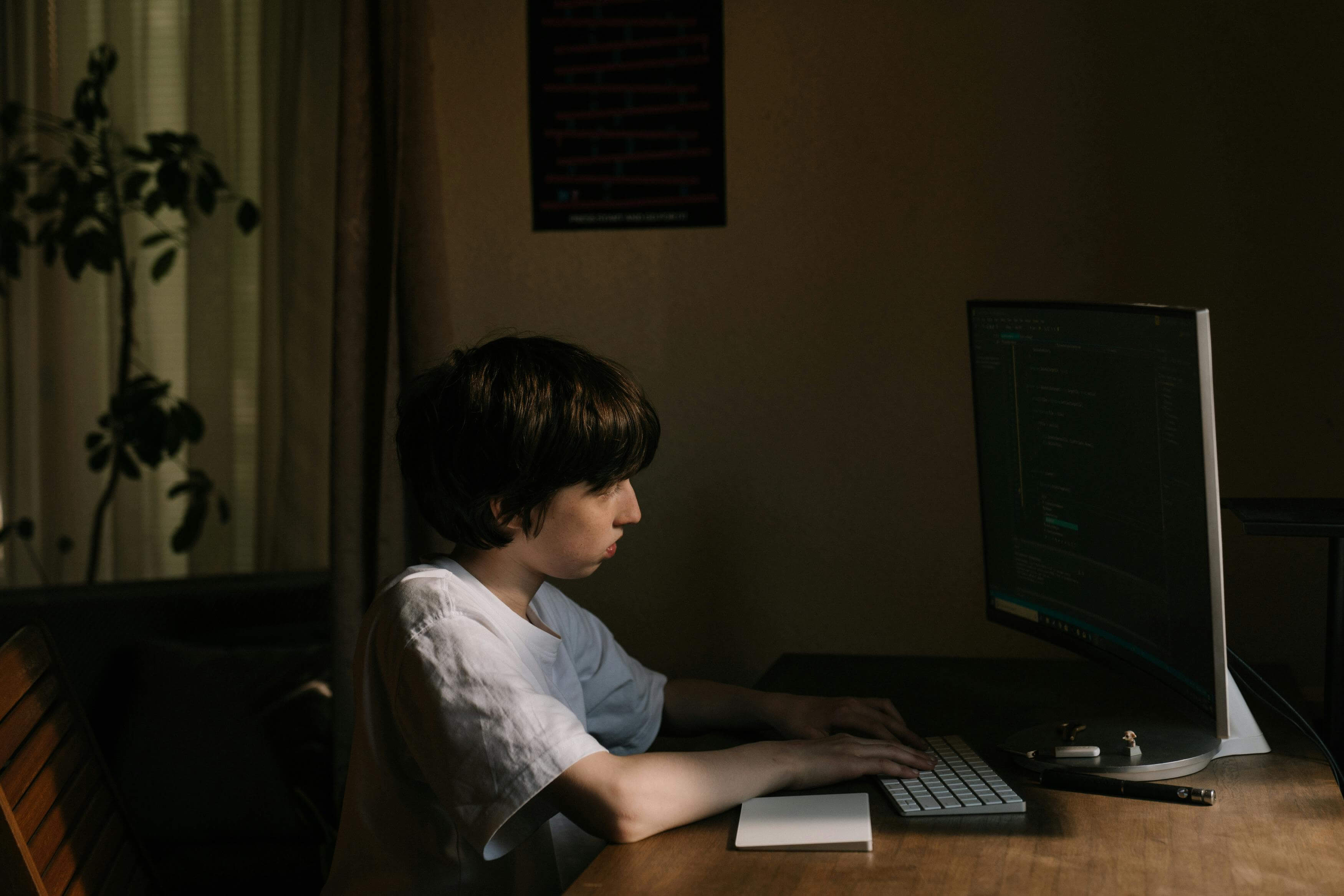The Dangers of Sharenting: How Your Child’s Photos Are Being Misused Online

From mom influencers and child influencers to the average parent’s daily posts of their children, sharenting has been on the rise for many years. Sharenting is when parents share photos and other information about their children on social media in excess.
The practice of sharenting can be controversial, with many people citing the potential for emotional harm to children who have no say in what is shared online. Not only can sharenting cause social and emotional distress for children, but there are other severe dangers such as photo theft and abuse involving children.
Why is sharenting so common?
For many parents, sharenting allows them to feel connected to their community. Whether it’s family members or other parents–sharing anecdotes and photos of their children with an online community can provide them with a sense of connection. With each online interaction in the form of likes, comments, or shares, they get to feel a rush of dopamine that contributes to those feelings of connection and validation (Simanson, 2023).
A 2021 survey found that 77% of parents share their children online in photos and videos (Boston Children’s Digital Wellness Lab, n.d.). As a result, the majority of children today (90%) will already have a digital footprint by the age of two (Muntingh, 2023), while the average five-year-old already has around 1,500 photos of them shared online (Bandara, 2023).
Even children and teens are joining parents in sharing their lives online, some of whom even aspire to be child influencers. A 2018 survey found that “Social Media and Gaming” was the 4th most popular career children ages 7 to 11 found aspirational (Boston Children’s Digital Wellness Lab, n.d.).
How your children’s photos are being used online
Although sharenting and the recent phenomenon of mom and child influencers have strengthened parenting communities and even enticed children to participate online, it has also contributed to the increasing dangers of photo abuse involving children. Anyone could be stealing and abusing your child’s photos online, but the most common perpetrators are creeps and scammers.
- In June 2023, the FBI released a public service announcement warning of a significant surge in sextortion and other related sexual photo abuse cases targeting women and children (ParentsTogether, 2023).
- Alarmingly, in just five years from 2017 to 2021, child sexual abuse photos circulating online have tripled from 10.2 million to 29.3 million (ParentsTogether, 2023).
- About 1 in 3 children are estimated to encounter an unwelcome sexual situation in an online space before the age of 18 (ParentsTogether, 2023).
- Research has indicated that more than 50% of children’s photos on the dark web were sourced directly from the parent’s social media and blog posts—and despite the innocent nature of those posts, sexual comments were made about the children on these websites (Boston Children’s Digital Wellness Lab, n.d.)
- By 2030, it’s also estimated that around 7.4 million identity fraud cases involving children could be a direct result of sharenting (Boston Children’s Digital Wellness Lab, n.d.).
Unfortunately, the list of dangers doesn’t end there. Aside from the sexual abuse of children’s photos, identity theft, and other forms of financial scams, your child’s photos could also be misused for reputational damage, digital kidnapping, and physical harm including kidnapping.
Your child’s peers could be seeking photos of your kid online with the intent to bully and harass them—or a stranger could be stealing photos of your child and trying to pose as the parent on their social media profiles. This phenomenon is known as digital kidnapping and is increasing in its occurrence online.
In 2012, Lindsey Paris, a mom blogger encountered a stranger who had liked a photo of her child. Paris later discovered this stranger had liked the photo so much that they even went as far as stealing the child’s photos and presenting the child as their kid on their social media profile (O’Neill, 2015).
Later in 2015, an anonymous mother from Nashville shared with Yahoo Parenting about a digital kidnapping incident where she discovered photos of her three and six-year-old daughters on a man’s social media account from China. The social media profile also shared dozens of photos featuring other young girls (O’Neill, 2015). Digital kidnapping incidents like these have only increased over the years as children become more present and shared on social media.
More recently in 2021, Meredith Steele, a mother of two went viral on social media for posting about motherhood topics and her children. While she had no intention of becoming a mom influencer or an online public figure of sorts, her social media account still became well-known on the internet. After a family outing to a restaurant, Steele was notified that someone was posting photos of her children on an account that wasn’t hers with thousands of followers. With few online safety precautions in place, Steele and her children went viral, but they also fell prey to digital kidnapping, with over six months of photos stolen and abused (Liberatore, 2023).
Sharenting can also lead to child abduction and other forms of physical harm to a child. Recent studies indicate that 82% of child sex crimes began on social media. Due to accessibility and lower detection risks, child abductors also prefer to use social media as an outlet to access children (Muntingh, 2023).
How to protect your kid's photos shared online
With so many dangers involved with sharing your children on social media, parents need to remain aware and vigilant about the kinds of photos and information they post about their children online.
- Some online safety tips and precautions you may want to consider before sharing your children on social media include: adjusting your privacy settings, avoiding sharing identifiable personal information, limiting friend and follower access to your social media profiles, and double-checking every photo and post of your child before sharing the content online.
You may also want to consider:
- Joining online safety initiatives such as Parents for Image Consent (P.I.C.): During the holidays, billions of selfies will be posted by parents and children in the United States on social platforms, representing the busiest volume of selfie posting period during the year. P.I.C. was created by parents concerned about the issue of image abuse, and the potential for the children to be victimized by it. The group seeks to alert parents to the issue and encourages them to work with their children to ensure that they post safe selfies during holidays and other moments throughout the year. “Image abuse affects 1 in 5 Americans and it’s important for parents to know where their kids’ selfies end up after they post them,” says Cathy Pedrayes, an online safety expert and National Chairperson for P.I.C.
- Monitoring photos of your children with photo monitoring and protection services: For most people, it’s impossible to track where all your photos are being used across the internet without additional help. ImageShield is a service that helps people protect the photos they share online from being abused. By using a photo monitoring and protection service such as ImageShield, you can find out whether the photos you’ve shared on Facebook, Instagram, and elsewhere are being used in a way they shouldn’t be.
Get your free ImageShield report today on the security of the photos you’ve shared on Facebook and Instagram. Visit our blogs for more information on media literacy and how to protect yourself and your family from photo abuse.
Resources:
Bandara, P. (2023, July 18). Terrifying Ad Warns Parents Against Sharing Photos of Their Kids Online. PetaPixel. Retrieved September 15, 2023, from https://petapixel.com/2023/07/13/terrifying-ad-warns-parents-against-sharing-photos-of-their-kids-online/
Boston Children’s Digital Wellness Lab. (n.d.). Research Brief: “Sharenting” and Child Influencers. Retrieved September 29, 2023, from https://digitalwellnesslab.org/research/research-brief-sharenting-and-child-influencers/
Liberatore, S. (2023, July 19). EXCLUSIVE: Parents who upload photos of their young children to social media are handing their likeness over to pedophiles and sick digital pranksters... These families found out about the dark side of 'sharenting' the hard way. DailyMail.com. Retrieved September 29, 2023, from https://www.dailymail.co.uk/sciencetech/article-12312665/The-dark-sharenting-Parents-upload-photos-young-children-social-media-handing-likeness-pedophiles-sick-digital-pranksters-families-hard-way.html
Muntingh, L. (2023, February 20). Social Media Kidnapping Statistics. Screen & Reveal. Retrieved September 18, 2023, from https://screenandreveal.com/social-media-kidnapping-statistics/
O'Neill, J. (2015, March 3). The Disturbing Facebook Trend of Stolen Kids Photos. Yahoo Parenting News. Retrieved October 25, 2023, from https://www.yahoo.com/news/parenting/mom-my-son-was-digitally-kidnapped-what-112545291567.html?guccounter=1
ParentsTogether (2023). Afraid, Uncertain, and Overwhelmed: A Survey of Parents on Online Sexual Exploitation of Children. Retrieved October 25, 2023, from https://parentstogetheraction.org/wp-content/uploads/2023/03/PT_PDF_final-2.pdf
Simanson, S. H. (2023, October 13). The psychology of 'sharenting': Why parents can't resist talking about their kids online — And what experts say about it. Yahoo. Retrieved October 17, 2023, from https://www.yahoo.com/lifestyle/the-psychology-of-sharenting-social-media-221628986.html?guccounter=1
Photo by ShotPot: https://www.pexels.com/photo/mom-taking-pictures-of-her-daughter-7705715/

